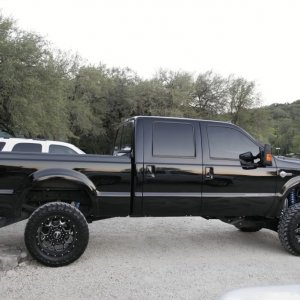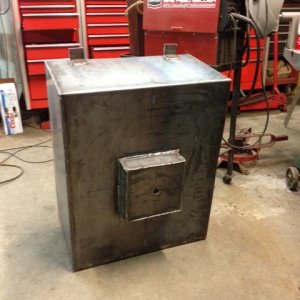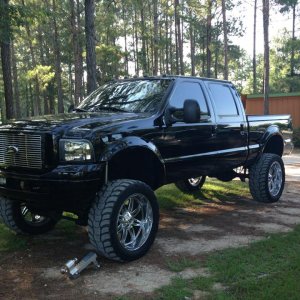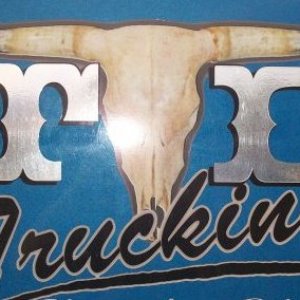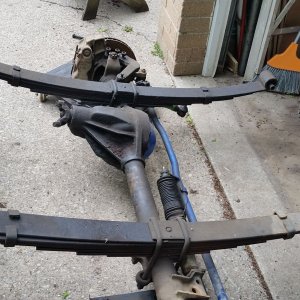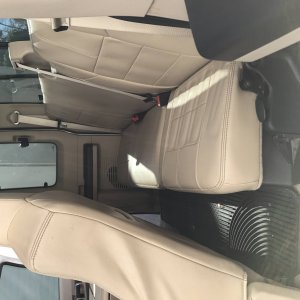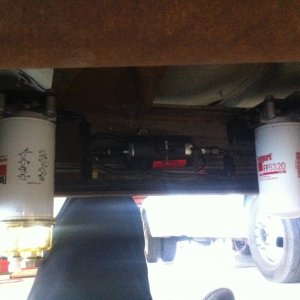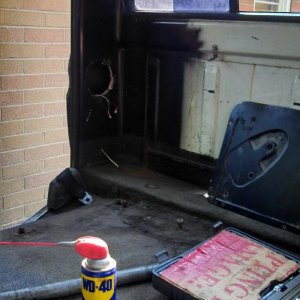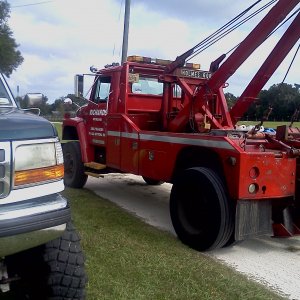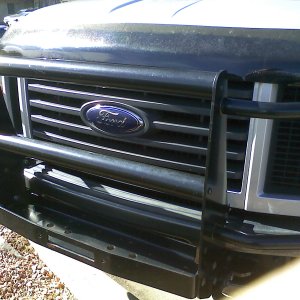You are using an out of date browser. It may not display this or other websites correctly.
You should upgrade or use an alternative browser.
You should upgrade or use an alternative browser.
Stealth SRP1 In Hand!
- Thread starter Beanhead
- Start date
Powerstroked162
On Da Juice
I am giving actual DATA it aint no inflated 37% number.... I can add all 7ish pistons together and give you bogus numbers... but that is actual data compared to stock numbers.
See you tomorrow, dear
Hotrodtractor
Moderator
any one know how to calculate bore size differences? Say from 7/16th "stock piston" to say a 15/32" or 1/2" with stock 17* stroke?
Pretty sure I could handle the monumental task of calculating the differences in the cross sectional area if I wanted to. LOL
Stroke is meaningless for what you are asking - but you are talking a 14% and change increase and a 30% and change increase in bore area over the stock piston. Does this mean that the T500 and T1000 use these size plungers?
Pretty sure I could handle the monumental task of calculating the differences in the cross sectional area if I wanted to. LOL
Stroke is meaningless for what you are asking - but you are talking a 14% and change increase and a 30% and change increase in bore area over the stock piston. Does this mean that the T500 and T1000 use these size plungers?
I won't disclose plunger size..... and I was implying comparative stroke on a 1/2 piston with same HPO stroke on 17*.... I can figure it out to but being lazy today....
FWIW I am only arguing this...
That piston posted is in no way 30% or even 37% larger in cross section.... more like 10-12%.. .4375 stock piston to aprox .46875 to .5...as there is just no room in that body to go much larger than those numbers..... meaning that that pump aint flowing the "advertised" numbers....... Boring out a delivery passage aint going to add flow....the piston bore/stroke is going to do that...
and volume can be increased one of 2 ways... just like the engine... bore size or stroke...as you know it ain't rocket science....
It doesnt matter one damn bit... I said it a million times pick your pony and ride it.... it really don't matter and don't mean jack **** when your running 200 cc injects or less....
See you tomorrow, dear
I am ready sweet pea...
Charles
Well-known member
- Joined
- May 18, 2011
- Messages
- 2,729
- Reaction score
- 47
I won't disclose plunger size..... and I was implying comparative stroke on a 1/2 piston with same HPO stroke on 17*.... I can figure it out to but being lazy today....
FWIW I am only arguing this...
That piston posted is in no way 30% or even 37% larger in cross section.... more like 10-12%.. .4375 stock piston to aprox .46875 to .5...as there is just no room in that body to go much larger than those numbers..... meaning that that pump aint flowing the "advertised" numbers....... Boring out a delivery passage aint going to add flow....the piston bore/stroke is going to do that...
and volume can be increased one of 2 ways... just like the engine... bore size or stroke...as you know it ain't rocket science....
It doesnt matter one damn bit... I said it a million times pick your pony and ride it.... it really don't matter and don't mean jack **** when your running 200 cc injects or less....
A 37% increase to total area requires a very small increase to section width for each piston. Remember, area goes up with the square of the radius...
0.4375 to 0.4687 would represent an increase in cross-sectional area of ~15% per piston. With 7 pistons, that would more than double pump outflow. About 105% in fact. A little more than two stock pumps if you went that big.
Needless to say then, a 37% total increase in pump displacement would require a VERY small increase in piston area. In fact, just 5.28% per piston.
Starting with a 0.4375" piston, it would require an increase to 0.4482".
About 0.010 to 0.011 larger pistons.
Doesn't seem crazy at all.
Last edited:
Hotrodtractor
Moderator
A 37% increase to area requires a VERY small increase to section width. Remember, area goes up with the square of the radius...
0.4375 to 0.4687 would represent an increase in cross-sectional area of ~15%. With 7 pistons, that would more than double pump outflow.
Needless to say then, a 37% increase in pump displacement would require a VERY small increase in piston bore.
For example - if the stock piston bore size is 0.4375" (7/16") a 37% increase put it at 0.512" bore. That is only a 0.0745" increase in bore diameter. Basically a 17% increase in bore diameter yielded a 37% increase in displacement. Sounds doable to me - especially when it appears that the revolver is slightly larger in diameter.
For visual purposes - attached is a picture of a 0.437" gauge pin next to a 0.512" gauge pin that I just snapped out in the shop on a granite table.
Attachments
Charles
Well-known member
- Joined
- May 18, 2011
- Messages
- 2,729
- Reaction score
- 47
For example - if the stock piston bore size is 0.4375" (7/16") a 37% increase put it at 0.512" bore. That is only a 0.0745" increase in bore diameter. Basically a 17% increase in bore diameter yielded a 37% increase in displacement. Sounds doable to me - especially when it appears that the revolver is slightly larger in diameter.
For visual purposes - attached is a picture of a 0.437" gauge pin next to a 0.512" gauge pin that I just snapped out in the shop on a granite table.
Yes, but the claim is not 37% per piston... it's 37% for the entire pump, housing 7 pistons.
If each piston was that large, then the total pump would displace 260% more than stock, lol.
The required individual bore increase for the pump to move 37% more is a fraction of even that.
Unless I haven't given enough thought to this...
I think 0.4482" would be the required piston bore to increase pump outflow by 37% over a 0.4375" piston.
Big Bore
Active member
If you have 10 cylinders, each with 10cc of volume, and you add 1cc of volume to each cylinder, you have increased the individual and cumulative volume by 10%.
Charles
Well-known member
- Joined
- May 18, 2011
- Messages
- 2,729
- Reaction score
- 47
If you have 10 cylinders, each with 10cc of volume, and you add 1cc of volume to each cylinder, you have increased the individual and cumulative volume by 10%.
Correct. The value Jason gave is the required increase.
The values I gave were for individual pistons were correct but not the totals they represented. I don't know why my brain tried to make the cumulative displacement percentage additive as if it were straight displacement and not percentage increase.
:doh:
Last edited:
Hotrodtractor
Moderator
Correct. The value Jason gave is the required increase.
The values I gave were for individual pistons were correct but not the totals they represented. I don't know why my brain tried to make the cumulative displacement percentage additive as if it were straight displacement and not percentage increase.
:doh:
You sir are off your game. What gives?
Big Bore
Active member
Correct. The value Jason gave is the required increase.
The values I gave were for individual pistons were correct but not the totals they represented. I don't know why my brain tried to make the cumulative displacement percentage additive as if it were straight displacement and not percentage increase.
:doh:
I don't really care why you made the mistake, I'm just thrilled there is now quotable internet evidence of Charles telling me I'm correct.
LOL
neverkickn
New member
^^^LMAO
Charles
Well-known member
- Joined
- May 18, 2011
- Messages
- 2,729
- Reaction score
- 47
You sir are off your game. What gives?
I'm gonna have to have myself checked out. The other day in a hard downpour with a hood pulled down over my head I did hit the boom on a 60 foot lift with my forehead hard enough to require 6 stitches. It didn't cut it, just hit with enough force that it pinched the skin between the boom and my skull until it sheared it.
I've been hit much harder before, but hell.
Maybe I retarded myself...
Last edited:
Maybe I retarded myself...
nice
Big Bore
Active member
In any event I think it's been established the SRP1 is moving 37% more than stock?
37% more than a new 17* is significant and well worth the price, since going any bigger cost about twice as much or more. The fact it can be done with zero modifications just adds icing to the cake. Nice work Stealth. :thumbsup:
37% more than a new 17* is significant and well worth the price, since going any bigger cost about twice as much or more. The fact it can be done with zero modifications just adds icing to the cake. Nice work Stealth. :thumbsup:
Sapps
New member
- Joined
- May 18, 2011
- Messages
- 57
- Reaction score
- 0

My orignal SRP1 on my tow rig had 100K miles on it & never missed a beat. Gary wanted it back to see how things looked inside. I just received new updated 1.1 pumps
Old OutLaw
New member
Neither will I....
and Charles, you may as well give up trying to teach Mathematics to the folks, as they're not learning...
the real problem is, (and always HAS been), that :
"You can Lead a Man to Knowledge, but You Cannot make Him Think"
and Charles, you may as well give up trying to teach Mathematics to the folks, as they're not learning...
the real problem is, (and always HAS been), that :
"You can Lead a Man to Knowledge, but You Cannot make Him Think"


